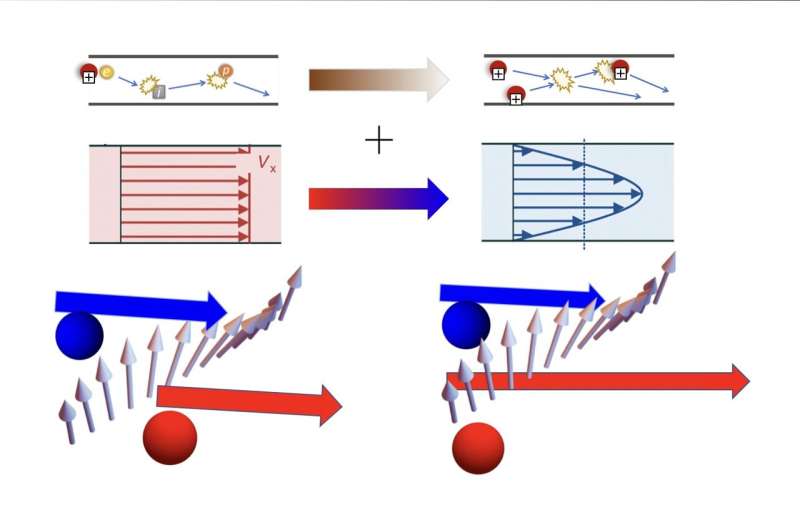This article has been reviewed according to Science X's editorial process and policies. Editors have highlighted the following attributes while ensuring the content's credibility:
fact-checked
peer-reviewed publication
trusted source
proofread
New set of equations predicts hydrodynamic behavior of magnons in a magnet

The term "quantum transport" may conjure images of a fantastic futuristic commuting option. In condensed matter physics, however, this is a fundamental concept in the hydrodynamics of electrons in solid and fluid materials.
Recent studies into iron-containing magnetic insulators in ultra-clean systems have brought increasing attention to the hydrodynamic behavior of "magnons"—magnetic quasi-particles—and their strong interactions with other particles. Studies on dissipated magnon and heat currents showed a significant deviation from expectations based on the standard magnetic "Wiedmann-Franz law."
Now, a team of researchers led by Kyoto University and the Kavli Institute for Theoretical Sciences in Beijing has formulated a new set of equations that could predict this difference between the conventional currents carried by magnons in a magnetic medium. The paper, "Breaking down the magnonic Wiedemann-Franz law in the hydrodynamic regime," published in Physical Review Letters.
"This breakdown of the magnonic WF law most likely originates with the difference in relaxation processes between spin and heat currents," says first author Ryotaro Sano of KyotoU's Graduate School of Science.
Sano's team posits that hydrodynamic magnon transport offers higher potential than conventional noninteracting electrons. With this hypothesis comes the anticipation that magnon transport properties will change, showing hydrodynamic traits and facilitating magnon fluid detection.
"The direct observation of magnon fluids has been an ongoing issue due to the technical inability to probe for characteristics of time and length scales," adds Mamoru Matsuo of KITS, "but we expect our results to become key evidence for an emergent hydrodynamic magnon behavior, leading to the direct observation of magnon fluids."
"Magnons in magnetic materials may someday replace electrons as the preferred information medium used in next-generation computing and information-processing technologies," predicts Sano.
More information: Ryotaro Sano et al, Breaking Down the Magnonic Wiedemann-Franz Law in the Hydrodynamic Regime, Physical Review Letters (2023). DOI: 10.1103/PhysRevLett.130.166201
Journal information: Physical Review Letters
Provided by Kyoto University





















